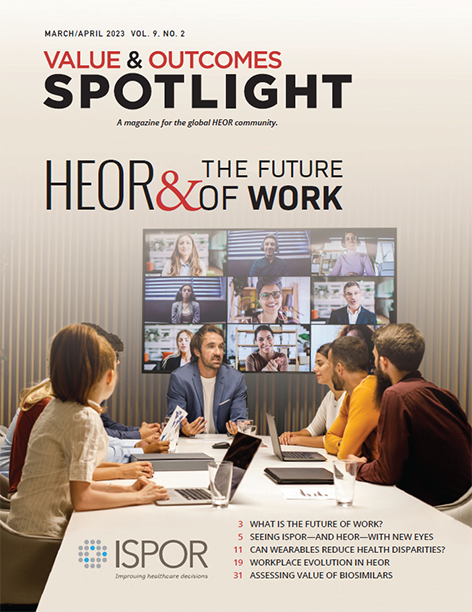What Is the Future of Work?
 The way we work has been ever evolving—driven by advancements in technology and changes in economics, culture, and society. Until recently, changes in ways of working and productivity increases had been driven mostly by technological advances (particularly industrialization and automation) and had mostly affected the labor or “blue collar” workforce. The societal and economic impacts of these advances on that workforce have been tremendous and have forced those workers to seek other career opportunities. Although many technical and service industries still require a modern-day labor workforce, employers have clearly shifted their needs toward a more professional workforce of employees who can drive creativity and innovation within an organization. However, due to the COVID-19 pandemic, that evolution became a revolution as both workers and employers were forced to dramatically adapt their ways of working. This revolution led to a conspicuous cultural shift in the way in which work and the workplace are defined as both employers and employees began reconsidering their business models and career needs.
The way we work has been ever evolving—driven by advancements in technology and changes in economics, culture, and society. Until recently, changes in ways of working and productivity increases had been driven mostly by technological advances (particularly industrialization and automation) and had mostly affected the labor or “blue collar” workforce. The societal and economic impacts of these advances on that workforce have been tremendous and have forced those workers to seek other career opportunities. Although many technical and service industries still require a modern-day labor workforce, employers have clearly shifted their needs toward a more professional workforce of employees who can drive creativity and innovation within an organization. However, due to the COVID-19 pandemic, that evolution became a revolution as both workers and employers were forced to dramatically adapt their ways of working. This revolution led to a conspicuous cultural shift in the way in which work and the workplace are defined as both employers and employees began reconsidering their business models and career needs.
"Although the current revolution in the ways of working is mostly a cultural one, the next revolution may possibly be technological...as technological advances such as ChatGPT are poised to eliminate mundane and repetitive tasks that were once thought to be performed only by humans."
One outcome of this workplace revolution was the emergence of the hybrid work environment. The pandemic accelerated the normalization of the hybrid work environment, which has shown to be effective, yield cost savings, and be desirable by employees. Professionals want more independence and flexibility in how, when, and where they work. They want to be able to work from anywhere and at any time using their own devices. They want to rely on collaboration technologies and focus on deliverables and outputs (rather than inputs) and they want the flexibility to define and choose their own career paths. Arguments have been made that in-person work is still key to both business and employee success. Face-to-face interactions can boost morale, build networks, and encourage spontaneous collaboration. Regardless, employers find themselves adapting to the needs of the changing workforce to enable recruitment and retain top talent. To attract this talent, employers need to demonstrate the true value proposition of their business and define the employee experience to potential candidates. This means establishing, articulating, and living their corporate culture, leadership style, sense of purpose, and societal impact—in short, creating an organization where employees want to be there rather than need to be there. These are just some examples of how businesses can create a forward-looking corporate environment and one in which an organization can continuously evolve by understanding employees’ needs. Employers are wagering that this strategy will allow them to recruit and retain the most talented professionals and will be a recipe for their future success.
Although the current revolution in the ways of working is mostly a cultural one, the next revolution may possibly be technological. As industrialization and automation has historically impacted the workforce, so may the artificial intelligence (AI) revolution impact the modern workforce, as technological advances such as ChatGPT are poised to eliminate mundane and repetitive tasks that were once thought to be performed only by humans. Industries such as accounting, banking, finance, and even human resources have been utilizing and will continue to develop AI for their business needs. As employers look to AI to maximize efficiency, eliminate decision-making bias, and increase productivity, they will also look for employees who can work alongside AI and effectively leverage this technology and require employees to develop these relevant skills. Moving forward, the key question for businesses is how to best integrate the emerging AI technologies within the current work environment to continue to foster an innovative and productive one for both employees and employer. Given the historical example of automation and the labor workforce, employers need to be mindful that this integration may prove challenging and have significant cultural and societal impacts on the workforce.
The ways we work are constantly changing alongside changes in our culture, economy, and technology. Both employers and employees who recognize and embrace this changing environment will be able to leverage it to drive efficiency, creativity, and innovation. By creating a workplace where employees can feel empowered and engaged while leveraging technology to eliminate the mundane and repetitive tasks, employers and employees working together can create a workplace environment where both can thrive and be successful. Doing so can increase productivity, inspire creativity, drive innovation, and foster connectivity to create a brighter future of work for all.
As always, I welcome input from our readers. Please feel free to email me at zeba.m.khan@hotmail.com.
Zeba M. Khan, RPh, PhD
Editor-in-Chief,
Value & Outcomes Spotlight

